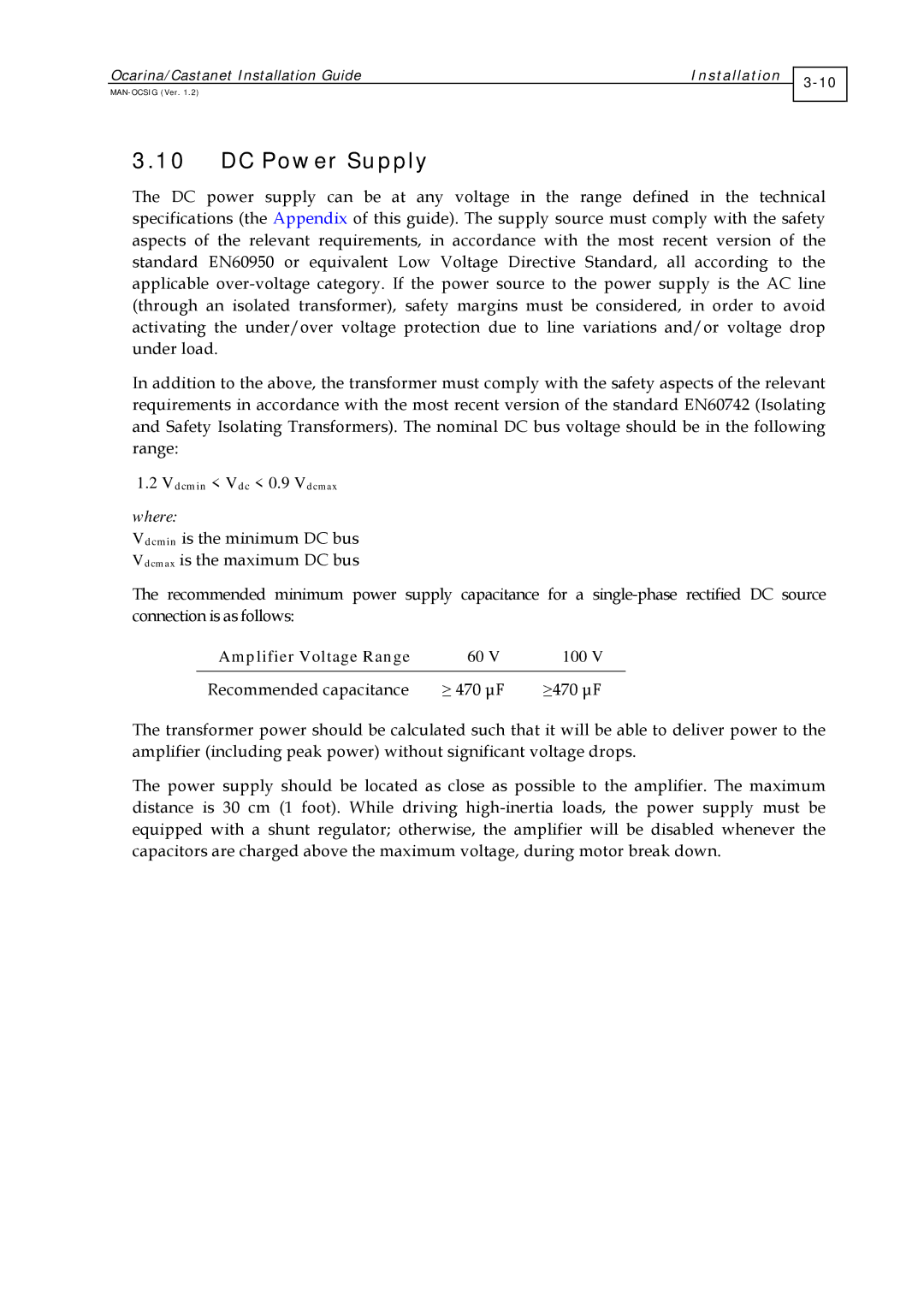Ocarina/Castanet Installation Guide | Installation |
| |
|
|
3.10DC Power Supply
The DC power supply can be at any voltage in the range defined in the technical specifications (the Appendix of this guide). The supply source must comply with the safety aspects of the relevant requirements, in accordance with the most recent version of the standard EN60950 or equivalent Low Voltage Directive Standard, all according to the applicable
In addition to the above, the transformer must comply with the safety aspects of the relevant requirements in accordance with the most recent version of the standard EN60742 (Isolating and Safety Isolating Transformers). The nominal DC bus voltage should be in the following range:
1.2 Vdcmin < Vdc < 0.9 Vdcmax
where:
Vdcmin is the minimum DC bus
Vdcmax is the maximum DC bus
The recommended minimum power supply capacitance for a
Amplifier Voltage Range | 60 V | 100 V |
|
|
|
Recommended capacitance | ≥ 470 µF | ≥470 µF |
The transformer power should be calculated such that it will be able to deliver power to the amplifier (including peak power) without significant voltage drops.
The power supply should be located as close as possible to the amplifier. The maximum distance is 30 cm (1 foot). While driving
